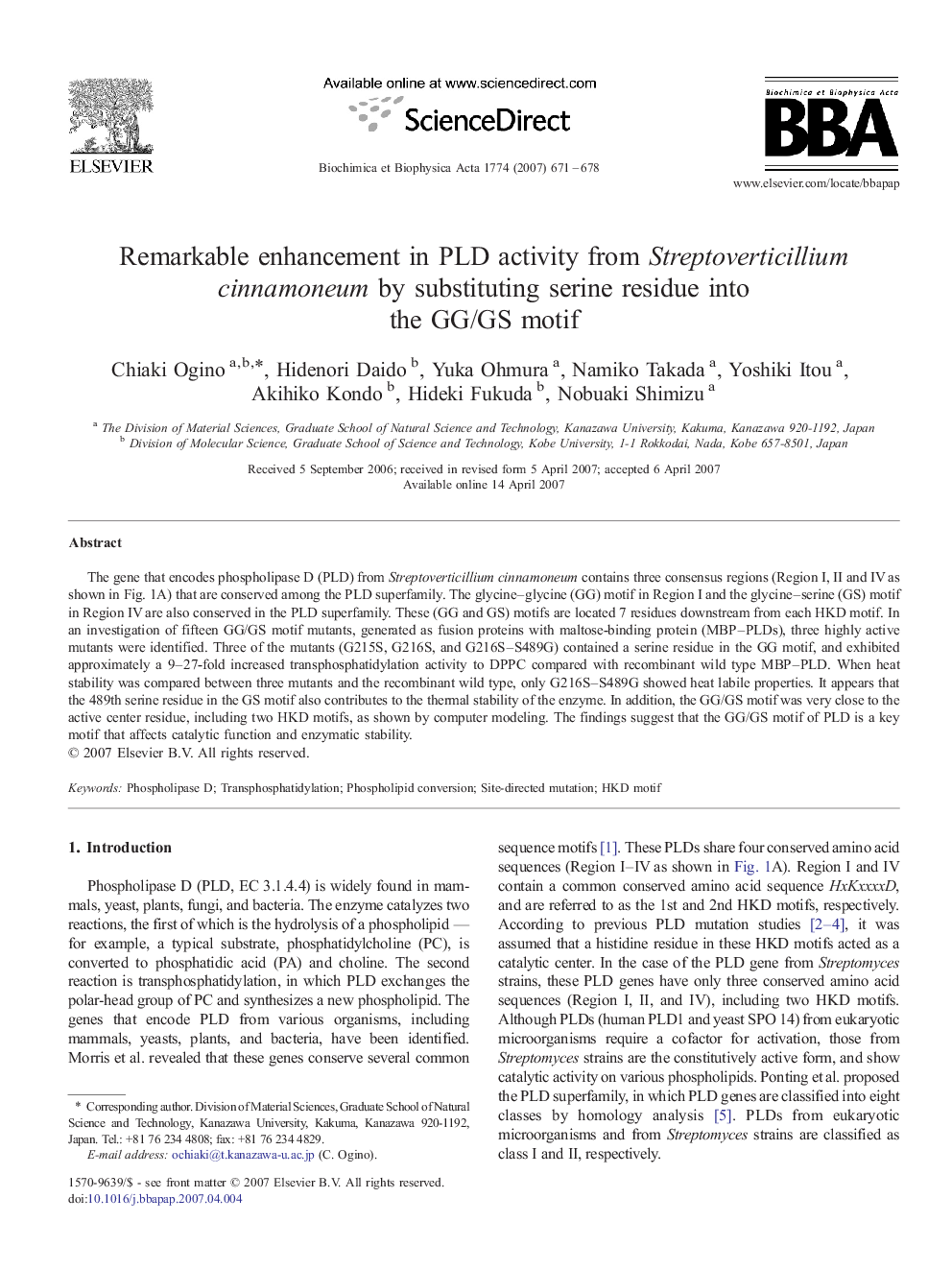| Article ID | Journal | Published Year | Pages | File Type |
|---|---|---|---|---|
| 1179219 | Biochimica et Biophysica Acta (BBA) - Proteins and Proteomics | 2007 | 8 Pages |
The gene that encodes phospholipase D (PLD) from Streptoverticillium cinnamoneum contains three consensus regions (Region I, II and IV as shown in Fig. 1A) that are conserved among the PLD superfamily. The glycine–glycine (GG) motif in Region I and the glycine–serine (GS) motif in Region IV are also conserved in the PLD superfamily. These (GG and GS) motifs are located 7 residues downstream from each HKD motif. In an investigation of fifteen GG/GS motif mutants, generated as fusion proteins with maltose-binding protein (MBP–PLDs), three highly active mutants were identified. Three of the mutants (G215S, G216S, and G216S–S489G) contained a serine residue in the GG motif, and exhibited approximately a 9–27-fold increased transphosphatidylation activity to DPPC compared with recombinant wild type MBP–PLD. When heat stability was compared between three mutants and the recombinant wild type, only G216S–S489G showed heat labile properties. It appears that the 489th serine residue in the GS motif also contributes to the thermal stability of the enzyme. In addition, the GG/GS motif was very close to the active center residue, including two HKD motifs, as shown by computer modeling. The findings suggest that the GG/GS motif of PLD is a key motif that affects catalytic function and enzymatic stability.
